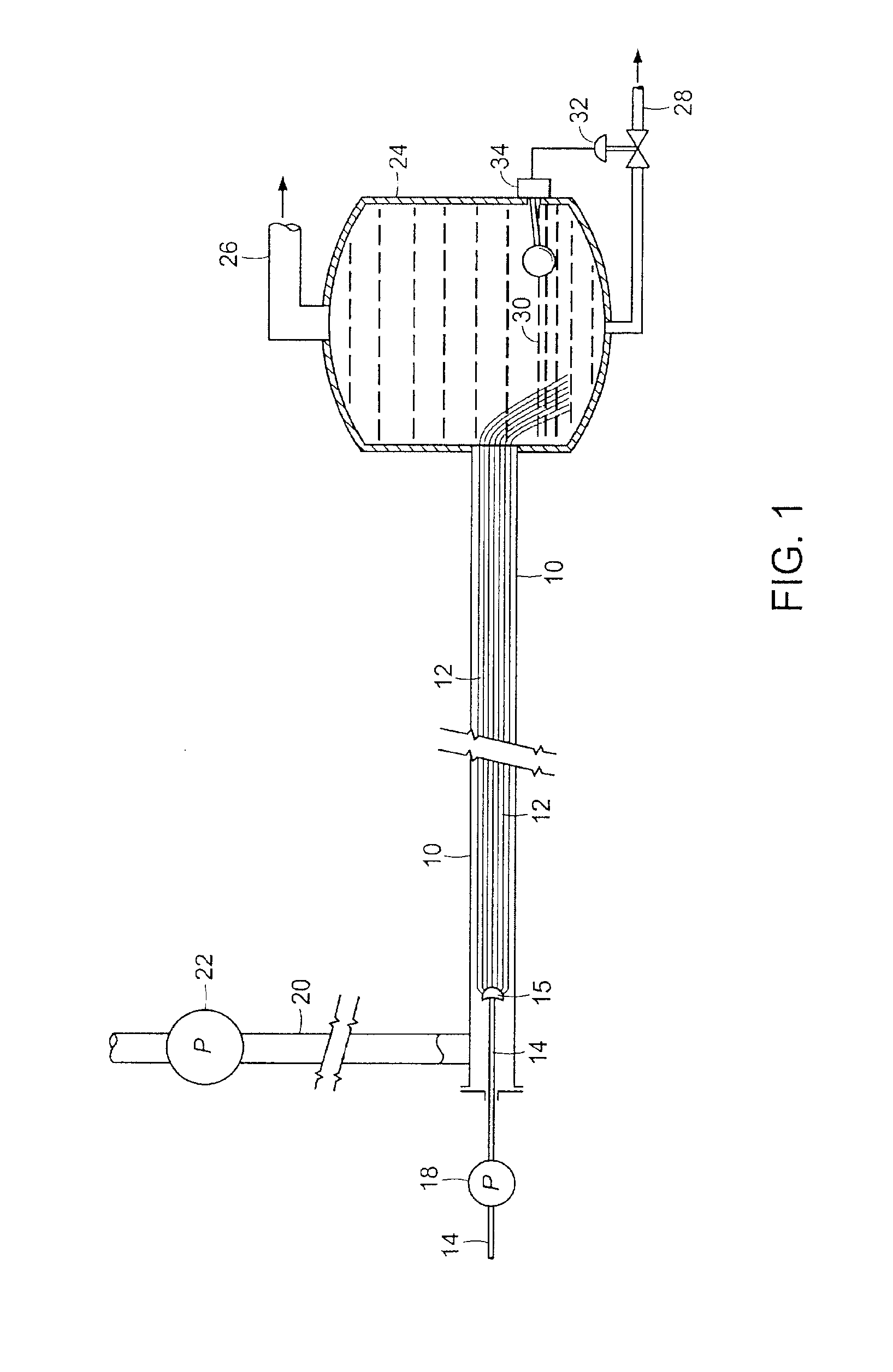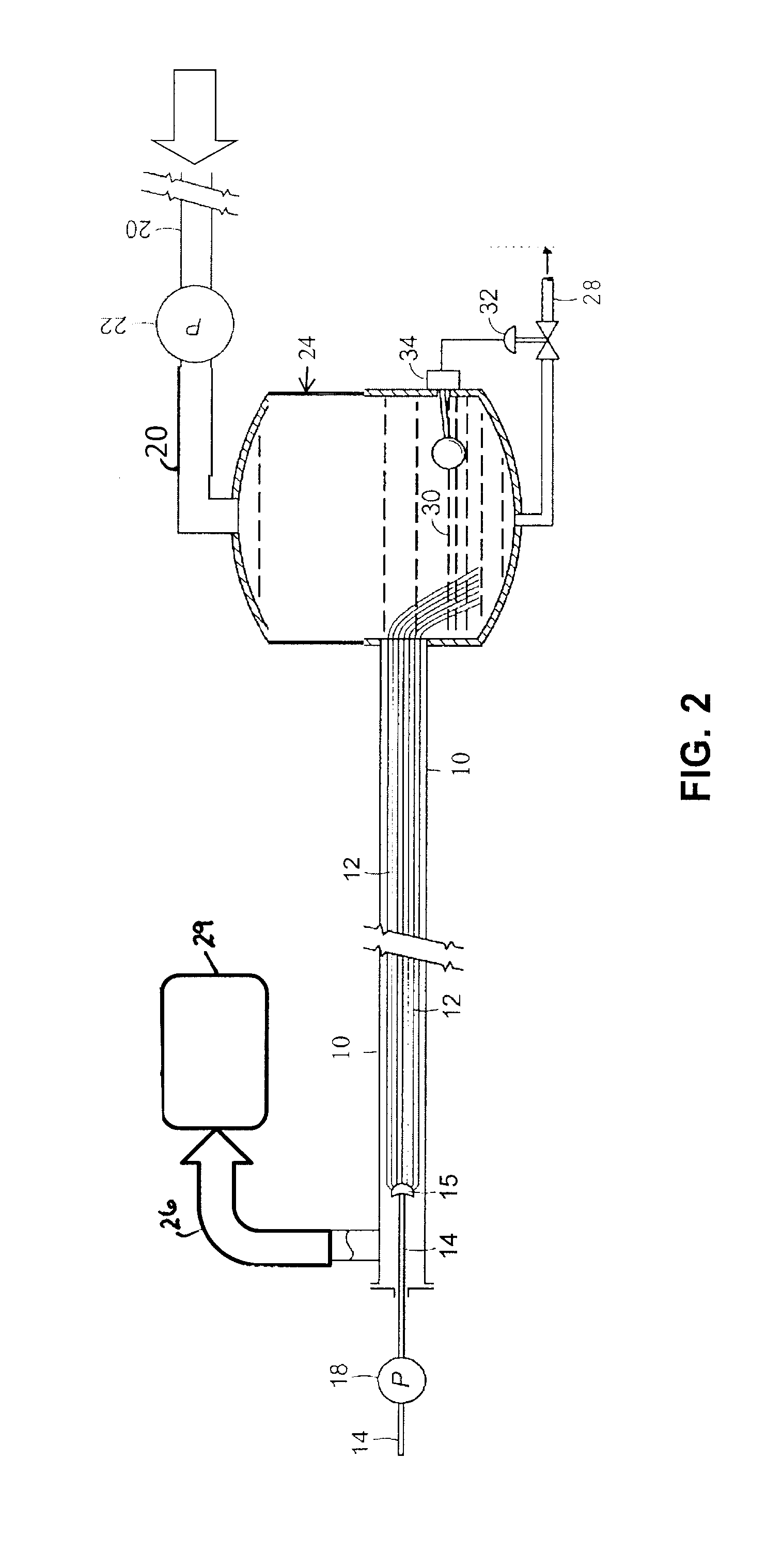Use of a Fiber Conduit Contactor for Metal and/or Metalloid Extraction
a contactor and fiber conduit technology, applied in the direction of quarries, separation processes, treatment water, etc., can solve the problems of high cost, high cost, and inability to meet environmental regulations, and achieve the removal of chemical species from fluidic streams and solids, relatively expensive and dangerous,
- Summary
- Abstract
- Description
- Claims
- Application Information
AI Technical Summary
Benefits of technology
Problems solved by technology
Method used
Image
Examples
example 1
[0056]This example illustrates the use of a fiber conduit reactor comprising a 12″×½″ stainless steel tube containing approximately 550,000 glass fibers 14 inches in length to primarily recover rhenium from waste superalloy. The liquid volume of the reactor was approximately 18 mL. Superalloy powder was dissolved in oxidizing acid. Two different solvent extraction experiments were performed by contacting a stream of approximately 1 ml / min of acid solution of superalloy on the fibers with 1) approximately 1 mL / min of kerosene containing extractants trioctyl amine and tributyl phosphate and 2) approximately 1 mL / min of kerosene containing tributyl amine and aliquat 336. Both experiments were performed at room temperature (i.e., between 20-30° C.). Pressure in the reactor during both experiments was less than 1 psig, indicating little to no accumulation of crud. The phases emerged from the reactor separated and flowed into the receiver. The lower aqueous phase was analyzed for the conc...
example 2
[0057]This example illustrates the use of a fiber conduit reactor comprising a 12″×½″ stainless steel tube containing approximately 550,000 glass fibers 14 inches in length to extract and separate rare earth elements from a simulant pregnant leach solution. The liquid volume of the reactor was approximately 18 mL. The simulant pregnant leach solution (PLS) was prepared by dissolving Y and Yb in acid solution. A first experiment was performed by contacting a stream of approximately 1 ml / min of acid PLS solution on the fibers with approximately 1 mL / min of kerosene containing a commercial extractant of bis(2-ethyl hexyl) phosphate. A second experiment was performed with the same solutions, but at approximately twice the flow rate. Both experiments were performed at room temperature (i.e., between 20-30° C.). Pressure in the reactor during both experiments was less than 1 psig, indicating little to no accumulation of crud. The phases emerged from the reactor separated and flowed into t...
example 3
[0058]Addition extraction experiments were conducted utilizing the PLS solution described in Example 2 in the same reactor described in Example 2 with an experimental extractant developed for solvent extraction of REE. The experimental extract was labeled as “Cyanex 572”, but the true identity was not provided. As show in the last two lines of Table 2, excellent results for selective extraction of Yb versus Y were achieved. A 28 minute process time through the fiber conduit reactor gave a separation factor Yb:Y of 206 and a shorter process time, specifically 14 minutes of process time through the fiber conduit reactor, yielded a higher separation factor Yb:Y of 2123.
TABLE 2Extraction and Separation of Y and YbSurrogateSurrogatesolution after%solution, (mg / L)extraction (mg / L)extractionExtractionYYbYYbYYbDYDYbSYb, YTime (min)52522704144.622.7497.399.235.31183.3285252270410217080.697.47.5689.1145252270451958301.169.30.012.32062552522704525120430.0224.40.00020.3212315Lines 1 and 2: Simu...
PUM
| Property | Measurement | Unit |
|---|---|---|
| diffusion time | aaaaa | aaaaa |
| diffusion time | aaaaa | aaaaa |
| melting point | aaaaa | aaaaa |
Abstract
Description
Claims
Application Information
 Login to View More
Login to View More - R&D
- Intellectual Property
- Life Sciences
- Materials
- Tech Scout
- Unparalleled Data Quality
- Higher Quality Content
- 60% Fewer Hallucinations
Browse by: Latest US Patents, China's latest patents, Technical Efficacy Thesaurus, Application Domain, Technology Topic, Popular Technical Reports.
© 2025 PatSnap. All rights reserved.Legal|Privacy policy|Modern Slavery Act Transparency Statement|Sitemap|About US| Contact US: help@patsnap.com



